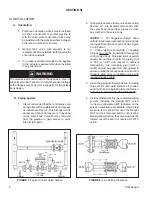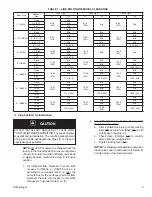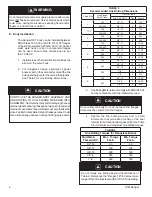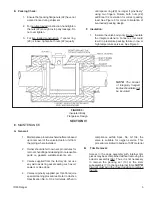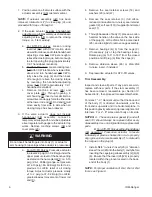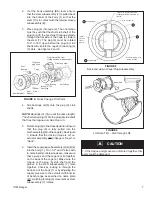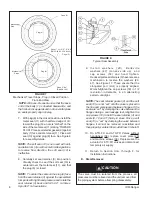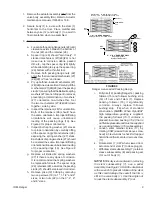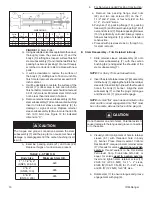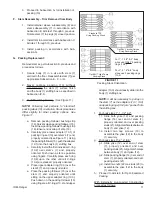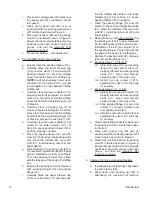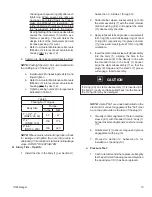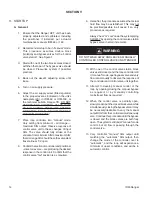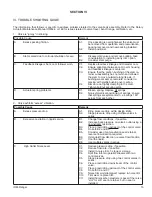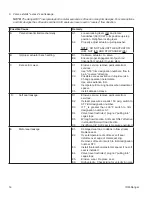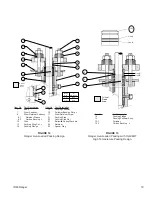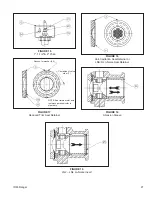
IOM-Ranger
16
3. Valve exhibits “excess” seat leakage.
NOTE:
The Ranger QCT incorporates both a metal seal and a soft seal in many trim designs. For some options
and trim designs the soft seal is omitted. Soft seals are never used in “reverse” flow direction.
Possible Cause
Remedy
A.
Valve stroke limited mechanically.
A1.
Loosen locking lever (59) and rotate
handwheel (58) CCW to its positive up-stop
position. Retighten lock ing lever.
A2.
Properly adjust actuator up-stop washer.
NOTE: DO NOT ADJUST THE ACTUATOR
JAM NUT (45) AND STOP SCREW (35).
B.
Improper actuator bench setting.
B1.
Calibrate actuator to valve.
B2.
Ensure proper engagement of push rod
linkage from actuator to valve stem.
C.
Excess trim wear.
C1.
Erosive service, remove particulate from
services.
C2.
Use “ST6” trim designation numbers; flow to
be in “reverse” direction.
C3.
Possible excess cavitation in liquid service.
Change operation parameters.
Use anti-cavitation trim.
C4.
Incorporate trim using fluorocarbon elastomer
spac er.
C5.
Install abrasion sleeve.
D. Soft seal leakage
D1.
Erosive service; remove particulate from
services.
D2.
If steam pressure exceeds 150 psig, switch to
ST7 trim designation number.
D3. If
T
1
is greater than 400°F, switch to trim
designation number S7.
D4.
Valve travel restricted; plug not “pulling into”
cage stops.
D5.
Wrong flow direction. Soft seal ONLY effective
in standard/forward flow direction.
D6. Insufficient
∆
P. Soft seal is pressure energized.
E.
Metal seal leakage
E1.
Damaged seal due to debris in flow stream.
Replace
seal.
E2.
Over-temperature of soft seal; soft seal
deforms over edge of metal seal ring.
Remove soft seal or switch to trim designation
number ST7.
E3.
Install fluorocarbon elastomer spacer if no soft
seal is installed.
E4.
Valve travel restricted; plug not “pulling into”
cage stops.
E5.
Erosive wear. Replace seal.
E6.
High velocity. Check sizing for velocity & noise.

